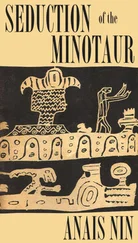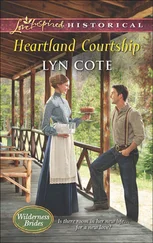It took me a week of sweat and cunt to piece together the bits. Seven journeys of Gomorrah in the library basement, each containing many others, like each day of the Creation—in this case, exactly seventeen and two-sevenths of the legendary one hundred and twenty-one sodomitic journeys. We began on a drizzly Monday morning. On Wednesday, after an increasingly violent and abject session yielded little information, I ordered her back to work as she was, wet and naked under her pleated skirt. On the top step, an inch away from the assistant librarian whose footsteps could be heard in the main room, she lowered herself onto my fist, slowly and deeply, and listened to my instructions. From that moment on, she was to sit from now on at work with her thighs slightly spread so that her naked cunt and buttocks were kept firmly in contact with the slick seat. She was allowed to rub her cunt against the seat, but not to touch it until she got home. The seat should be left unwiped, for anyone who might enter her office to see and smell. She was not to wear panties, pants, or any skirt that could not be easily lifted above the chair. On Thursday, she begged me to discipline her. She had touched her cunt once, late in the afternoon when rubbing it against the seat had ceased to alleviate her. I made her wait until Sunday afternoon, after her Holy Communion at Saint Glykeria, Martyr. I fitted her with a double plug held firmly in place by a leather strap. She was to wear it at all times. I ordered her to go upstairs to the main floor, naked except for her strap and shoes, so that she would begin to get accustomed. She was not to come down until I called her. I let her wait a good half-hour before going up. I found her standing by a window, the blinds slightly opened. Any observant passerby could have seen her. It was very risky. She was ready to answer my questions. This was the day: I could not let her leave until she talked. The plugs slid out of her, wetly, the moment I loosened the strap. She was lying on a table on her stomach, spread-eagled, her ass slightly raised so I could better see her cunt and her newly opened butthole. I fucked her for the rest of the afternoon, with my fingers and both of my fists, reinserting and removing the plugs. The table was drenched with cunt wetness and blood. I fucked her against walls and floors, on chairs, in a sweating frenzy, pinching her nipples, twisting the plugs inside her orifices to open them more. We stumbled down to the basement and lay there on the floor as the sun began to come down. She brought me a glass of water from the bathroom sink. When I was done drinking, she gave me the last and meatiest piece of the puzzle she had been feeding me bit by bit all week. That night, in the Judge’s study, I finally assembled the puzzle, only to discover that there was another puzzle hidden within it. This is what Mrs. Crandall told me during our seven journeys. I have put it in chronological order and added a few comments.
Shortly before I regained consciousness, McCabe had called Mrs. Crandall at the library to make an appointment, in private, at Mrs. Crandall’s office after the library closed for the day. Mrs. Crandall did not know how McCabe had gotten there, or returned home. She had offered to drive her back, but McCabe declined. Mrs. Crandall knew by then everything there was to know about the public McCabe, heroic SoHo art merchant. She was shocked by the physical change, but accepted McCabe’s explanation that she had been on a strict diet. Besides, her voice was the same as Mrs. Crandall remembered from their brief encounter at our kitchen door—the first time, she swore, that they had met. (I was puzzled by Mrs. Crandall’s assessment, but did not want to interrupt her first substantial flow of information: I thought McCabe’s voice had changed as much as her body, perhaps even more.) McCabe had been extremely gracious. She thanked Mrs. Crandall for receiving her on such short notice. It was a confidential matter. Her employee was gravely ill; the prognosis was not good. McCabe wanted Mrs. Crandall’s help to locate a relative who had lived in Elmira a long time ago and might still be here: Her name is Glorita , she said. “She thought that as a librarian I would know who’s who in town. I explained to her that Shangri-La was not really part of the town, although technically it was. I had never been there. None of them had ever come to the library in my fifteen years here,” Mrs. Crandall told me. (I had, almost every day, but that was long before Mrs. Crandall’s arrival.) McCabe had left, graciously, but visibly troubled. (How had Mrs. Crandall, at first glance, learned to gauge what was going on behind that bony, impassible face?) Mrs. Crandall was curious, though, so she made some discreet enquiries. A few of her friends had Mexican maids who lived in Shangri-La. All were recent arrivals. None knew of any Glorita. A few days later, a $20,000 donation was made anonymously to the library fund, of which Mrs. Crandall was a trustee. It came from a private account at J.P. Morgan in Manhattan. The bank would not say more when Mrs. Crandall called to express her gratitude. She was sure McCabe had sent it. Mrs. Crandall almost drove to the Judge’s house to thank McCabe personally, but changed her mind at the last minute. “She was so shy and polite that I did not want to embarrass her,” she told me. Instead, she redoubled her efforts to find information about Glorita. “The least I could do,” she added. She searched the library records and confirmed that no one from Shangri-La was registered. She checked the phone book for any spic named Gloria or G. anywhere in the county. There were about a dozen Gs, but they turned out to be Gregorios (which Mrs. Crandall charmingly pronounced Gorgorius, like the current Basileus), Germanes (which she did with a hard G and a sibilant s), or Gladyses. She canvassed in vain the tax rolls and the High School yearbooks from the 1970s (but did not recognize me in my shag, I cackled inwardly, keeping that and my local origins to myself; as for Glorita, she did not graduate). Mrs. Crandall then sent McCabe a brief letter reporting on her investigation, which was delivered by the butcher boy. She had decided against even a tactful mention of the anonymous donation. “I did not want her to think that I was trying to help just for her money,” she told me. I could barely control my urge to slide my hand back into her prodigious cunt. Mrs. Crandall was most whorish when smarmy. She sensed my skepticism, but not my lust, fortunately, because her story would have been truncated. “I also did it because I was bored at the time,” she said, giving me a hungry look that could have degenerated into another wall-splattering blood-and-secretion orgy if my mind had not been all tangled in Glorita’s sudden appearance in the story. Much to Mrs. Crandall’s surprise, McCabe called her as soon as she received the letter, and asked if she would drive her to Shangri-La to look for Glorita. They went on four consecutive Sunday afternoons. McCabe insisted on remaining inside the car while Mrs. Crandall, Greek New Testament and Spanish phrasebook in hand, knocked on doors, pretending to be on a church mission. There was no street map of Shangri-La. The only available map of Elmira, a wispy black-and-white ink drawing printed by the county fifty years earlier, did not even show its site. It also stubbornly refused to show most of Elmira’s side streets, featuring the less grandiose houses. Mrs. Crandall, who had dabbled in Chinese ink and watercolor painting to alleviate her boredom, drew a street map of Shangri-La on the first Sunday, as she and McCabe drove around trying to understand the shape of the neighborhood. This was Mrs. Crandall’s idea. She drew the perimeter and the one access road, looking in vain for the main streets before concluding that there were none. Small concrete-block houses sat next to rusty trailers and wooden shacks on the same block. All streets seemed equally important or unimportant, or maybe their importance depended on signs that they could not yet decipher. Mrs. Crandall divided her map into four large grids. McCabe picked the upper left quadrant to begin their canvassing. They would cover the other three in a counterclockwise sweep on the following three Sundays. Mrs. Crandall’s canvassing system was based on cleanliness and prudence. She only knocked on the cleaner-looking houses that showed signs of female habitation. Her quota was two per block. She also approached the few women she saw lurking in the freezing porches and backyards. Some directed her to the home of an older resident; one even took her there herself. Mrs. Crandall kept a log of her interviews. None of the Shangri-La streets had traffic signs or nameplates that she could see. How did people know where they lived? How had mail been delivered? (We know the way ants and bees know, Mrs. Crandall. The late-lamented USPS never set foot in Shangri-La. They dumped their whole load inside that concrete bunker with the locked, rusty side door located on the left side of the access road, where it joins County Route 37. Some old guy paid under the table by the residents—so he wouldn’t lose his equally late-lamented food stamps—then delivered the mail door to door. He was the one who would have known about Glorita, if anyone did. These were my parenthetical thoughts, which remained unsaid.) Mrs. Crandall numbered the streets running west–east in a north–south progression, and named with letters the ones running north–south, in an alphabetical west–east order. So 1st and A streets both began at their intersection on the northwestern corner of the upper left quadrant they canvassed on that first Sunday. Her logbook registered date, time, street, and both cross-streets; location of house within the block; description of interviewee (only three gave their surnames); and KN for knows nothing, NR for new resident, R10, R20, R1987, or RL for those who had lived there ten or twenty years, or since 1987, or “for a long time.” On their fourth and final Sunday, as they finished canvassing the last quadrant of Shangri-La, they had yet to find a trace of Glorita.
Читать дальше












